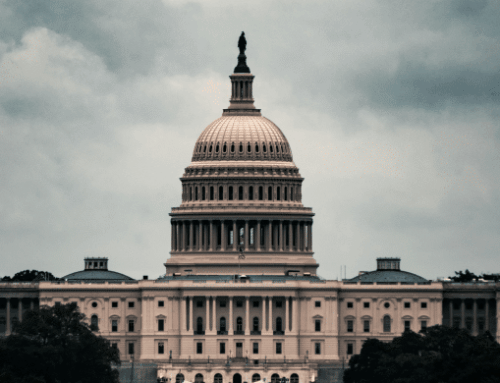After months of negotiation and a failed vote to proceed to debate on the $118.3 billion emergency supplemental package, H.R. 815, National Security and Border Act, 2024, the Senate pulled an about face on February 8 and agreed (67 to 32) to consider the bill. The move came once Majority Leader Schumer (D-NY) removed all spending and policy provisions related to securing the southern border. The Senate is now on track to consider a nearly $95 billion emergency supplemental more than two months since it was introduced in the Senate and nearly six months after the administration made its initial funding request.
The slimmed down version of the bill would direct more than $67 billion to accounts at the Department of Defense and an additional $27 billion to non-DoD diplomatic and humanitarian assistance accounts.
| Ukraine (Defense) | $48,432,217,000 |
|---|---|
| Non-Ukraine (Defense) | $18,910,242,000 |
| Israel | $13,172,600,000 |
| Countering China | $2,442,400,000 |
| U.S. Submarine Industrial Base | $3,295,242,000 |
| Total Defense | $67,342,459,000 |
| Ukraine (Non-Defense) | $21,222,455,000 |
|---|---|
| Non-Ukraine (Non-Defense) | $5,833,000,000 |
| Israel | $3,735,000,000 |
| Countering China | $2,000,000,000 |
| Critical Domestic Needs | $98,000,000 |
| Total Non-Defense | $27,055,455,000 |
Download the Complete Supplemental Request line-by-line analysis here:
Looking at all Pentagon spending in support of Ukraine since March 2022, this latest package, if enacted, would bring the total from just over $62 billion to just shy of $110.6 billion. All in, the defense, diplomatic, and humanitarian spending we’ve undertaken on an emergency budgeting process in response to Russia’s invasion of Ukraine is $113 billion before this latest package. A detailed accounting of previous supplemental spending in response to Russian aggression against Ukraine can be downloaded here.
One of our biggest questions continues to be what portion of this funding can reasonably be called “emergency” funding, as opposed to long-term investments that should be incorporated into the normal budget process. As the administration pointed out when the bill was first introduced, the latest “supplemental request invests over $50 billion in the American defense industrial base,” funding that is mainly focused on ensuring adequate production of munitions so the U.S. can continue transferring munitions to allies while maintaining sufficient stockpiles at home.
The $34.27 billion appropriated for Defense-Wide Operations and Maintenance includes $13.4 billion to replenish DOD stocks, reimburse the Pentagon for defense services and military education and training provided to Ukraine, and “to improve ammunition plants and equipment to increase the capacity and accelerate production of equipment to more rapidly replenish defense stocks.” An additional $13.8 billion is for the Ukraine Security Assistance Initiative. This bill also directs $4.4 billion to Israel and allied countries to replace or repair equipment used in the conflict with Gaza. Stretching the definition of “emergency,” $1.9 billion is directed to the government of Taiwan for these same purposes.
In the first year of the Russia-Ukraine war, using emergency funding to ramp up munitions production was justifiable, but now, nearly two years into the conflict, the administration’s assertion, and the Senate’s endorsement, that “this funding arises from unforeseen and unanticipated events” is less clear.
The notion that spending is an “emergency” and thus should skirt the normal budgeting process is even more head-scratching when it comes to other accounts. The bill provides $3.3 billion in “emergency” funds for the industrial base of submarine construction including workforce development, supplier issues, shipyard investment and more. It is true that submarine production is behind schedule and under strain with promised submarine sales to Australia, but this is something that has been known to lawmakers and can be addressed through the regular budget process.
Similarly, nearly all of the spending directed toward countering China’s influence also fails to be a true budgetary emergency. China is certainly a major competitor, economically, politically, and militarily. But this is a well-known fact and a central plank of Pentagon planning for years. The Senate bill adds $542.4 million for “unfunded priorities of the Indo-Pacific command.” This line item was not included in any of President Biden’s spending requests. Unfunded priorities have been a routine way Congress has funneled money into pet projects that have failed to rise to the level of importance to make it through the Pentagon’s rigorous budgeting process. Moreover, of the $3.5 billion INDOPACOM’s requested in its extra-budgetary wish list for Fiscal Year 2024, $2.1 billion is for various Research, Development, Test and Evaluation (RDT&E) projects that won’t impact U.S. capabilities until they evolve into procurement projects, if they ever do. In other words, this funding isn’t just stretching the definition of an emergency, it’s ignoring it.
To be clear, our criticism isn’t a value judgement on the funding in the supplemental. Rather, we’re questioning whether this is the appropriate vehicle for this funding and flagging the tendency for emergency funding packages to fund priorities that could have been anticipated and funded in the normal budget process. To be clear, some items in this package are obviously in response to unanticipated and unbudgeted needs. The bill’s $2.44 billion directed to the Defense-Working Capital fund to support operations and replace weapons protecting shipping in the Red Sea is one.
But the normal spending process, which the administration and Congress go through each year, allows taxpayers and their representatives in Congress to weigh funding priorities against each other and consider the nation’s resource constraints. Lumping the industrial base funding or unfunded priorities in with genuine emergency funding sidesteps much of the scrutiny and accountability that the normal budget process allows for and contributes to our nation’s unsustainable debt.










